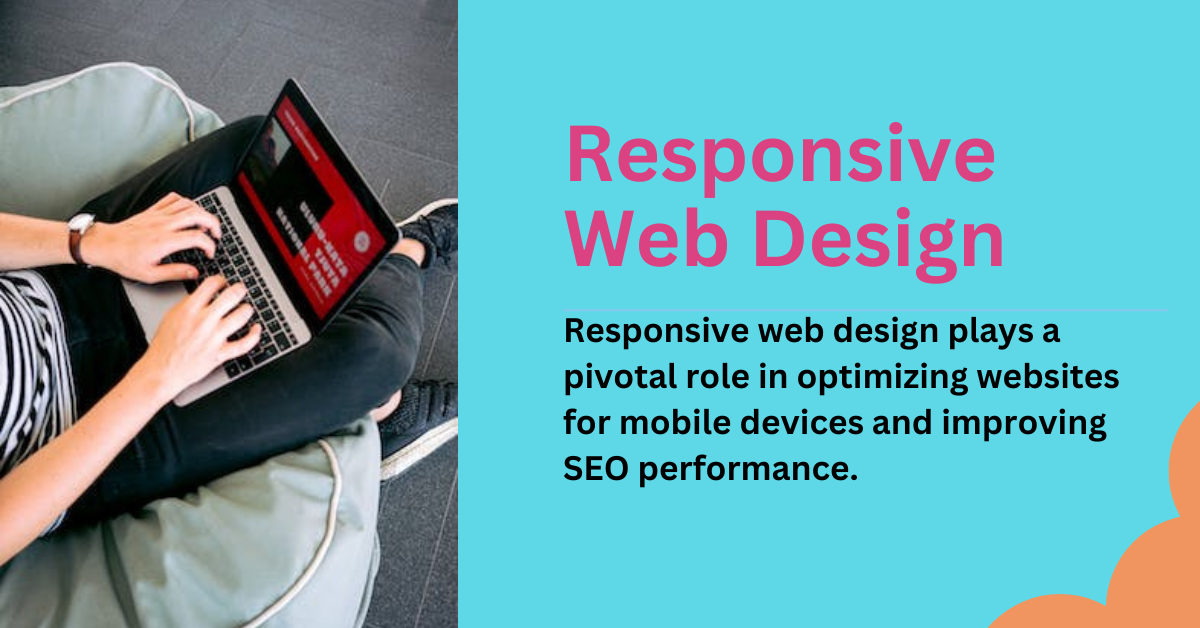In the mobile-dominated era, responsive web design has become crucial for businesses aiming to provide seamless user experiences across devices. Responsive design optimizes websites for mobile devices, ensuring they adapt flawlessly to different screen sizes, resolutions, and orientations. This blog post delves into the significance of responsive web design in optimizing websites for mobile devices and enhancing search engine optimization (SEO). Discover how implementing responsive design principles can lead to improved user engagement, increased mobile traffic, and higher search engine rankings.
Understanding Responsive Web Design
Understanding responsive web design involves comprehending the principles and techniques behind designing and developing websites that seamlessly adapt to different screen sizes and devices. It recognizes the importance of catering to the growing mobile audience and aims to deliver optimal user experiences by utilizing fluid grids, flexible layouts, and media queries.
By implementing responsive web design, websites can provide consistent and visually appealing experiences, improve user engagement, increase mobile traffic, and enhance search engine rankings. It requires a thorough understanding of user behavior, consideration of various devices and resolutions, and the utilization of best practices to create future-proof websites that meet the demands of the modern digital landscape.
Benefits of Responsive Web Design
The benefits of responsive web design are numerous and impactful. Firstly, responsive design ensures that websites provide a consistent user experience across various devices, eliminating the need for separate mobile versions. This leads to increased user engagement, satisfaction, and lower bounce rates.
Additionally, responsive web design helps to reach a wider audience by accommodating different screen sizes and resolutions, making the website accessible to mobile and tablet users. This can result in increased mobile traffic, higher conversion rates, and improved business opportunities.
From an SEO perspective, responsive design plays a crucial role in search engine rankings. Search engines prioritize mobile-friendly websites, and responsive design meets that requirement. A well-optimized responsive website can improve its visibility in search engine results, driving more organic traffic and boosting online visibility.
Furthermore, responsive design simplifies website management, as there is no need to maintain separate versions for different devices. It also reduces development and maintenance costs in the long run.
Overall, the benefits of responsive web design include enhanced user experience, increased mobile traffic, improved SEO performance, cost-effectiveness, and simplified website management. By embracing responsive design, businesses can effectively engage with their audience, drive conversions, and stay competitive in the ever-evolving digital landscape.

Implementing Responsive Web Design Strategies
Implementing responsive web design strategies involves several key considerations and techniques to ensure that websites adapt seamlessly to different devices and screen sizes.
One of the primary strategies is the use of fluid grids, which allow website elements to adjust proportionally based on the screen’s dimensions. This ensures that the layout remains consistent and visually appealing across devices.
Flexible layouts are another essential aspect of responsive design. By utilizing flexible units like percentages and relative measurements, content can dynamically adjust to fit different screen resolutions. This enables a smooth and optimized viewing experience for users.
Media queries play a crucial role in responsive design. They allow CSS rules to be applied selectively based on specific device characteristics, such as screen width, height, or orientation. Media queries enable developers to customize the design and layout for different breakpoints, ensuring that the website looks and functions optimally on various devices.
Another key strategy is optimizing images and media for responsive websites. This involves properly compressing images, using the appropriate file formats, and implementing techniques like lazy loading to improve performance and reduce page load times.
Testing is a crucial step in implementing responsive web design. It involves thorough testing on various devices, browsers, and screen sizes to ensure that the website performs flawlessly across different platforms. This includes both manual testing and utilizing automated testing tools.
In summary, implementing responsive web design strategies involves using fluid grids, flexible layouts, media queries, optimizing images, and conducting comprehensive testing. By following these strategies, websites can deliver optimal user experiences, accommodate different devices, and ensure consistent performance across the ever-expanding range of digital platforms.
Mobile-Friendly User Experience
A mobile-friendly user experience is crucial in today’s digital landscape, considering the widespread use of smartphones and tablets. Responsive design plays a significant role in ensuring a seamless and optimized experience on mobile devices.
One key aspect is optimizing touch interactions. Responsive design takes into account the touch-based nature of mobile devices, allowing for larger, easily tappable buttons and interactive elements. This enhances usability and reduces the chances of user frustration when navigating the website.
Intuitive navigation is another vital component. Responsive design enables the creation of intuitive menus and navigation systems that adapt to different screen sizes. This ensures that users can easily find the information they need, regardless of the device they are using.
Fast loading speeds are critical for mobile devices, where users expect quick access to information on the go. Responsive design optimizes loading times by minimizing file sizes, leveraging browser caching, and utilizing efficient coding practices. This results in a faster and smoother experience for mobile users.
Streamlined content is essential for mobile devices, as screen space is limited. Responsive design allows content to be organized and prioritized, ensuring that users see the most relevant and essential information without overwhelming them with unnecessary details. This improves readability and helps users quickly find what they are looking for.
SEO Benefits of Responsive Web Design
Responsive web design offers numerous SEO benefits that can positively impact a website’s visibility and search engine rankings.
Firstly, the responsive design eliminates the need for separate mobile and desktop versions of a website. This consolidation of content into a single URL helps to avoid issues such as duplicate content, which can negatively impact SEO. With a responsive website, all traffic is directed to a single URL, making it easier for search engines to crawl and index the site’s content.
Furthermore, responsive web design provides a consistent user experience across different devices. This leads to lower bounce rates and higher engagement, two factors that search engines consider when ranking websites. When users have a positive experience on a responsive site, they are more likely to spend more time on the site, view multiple pages, and convert into customers or subscribers.
Additionally, the responsive design improves website loading speed, which is a crucial SEO ranking factor. With a single responsive site, there is no need for redirection or loading separate versions of the site for different devices. This reduces load times and improves overall site performance, resulting in better search engine rankings.
Moreover, responsive web design encourages mobile-friendliness, which is increasingly important in search engine algorithms. With the growing number of mobile users, search engines prioritize mobile-friendly websites in their mobile search results. By providing a seamless and optimized mobile experience, responsive websites have a better chance of ranking higher in mobile search results.
Frequently Asked Questions
Q: What are the key elements of a responsive web design?
A: A responsive web design includes key elements such as fluid grids, flexible layouts, and media queries. Fluid grids ensure that the website’s layout adjusts proportionally to different screen sizes. Flexible layouts allow content to adapt seamlessly, maintaining readability and usability across devices. Media queries enable targeted CSS styles based on specific screen dimensions, enhancing the overall responsive experience.
Q: How does responsive web design improve mobile user experience?
A: Responsive web design improves mobile user experience by optimizing the website’s layout, content, and functionality for smaller screens. It ensures that the website is visually appealing, easy to navigate, and fully functional on mobile devices. With responsive design, users can access information effortlessly, interact with elements intuitively, and have a consistent experience across different devices.
Q: Is responsive web design necessary for SEO success?
A: Yes, responsive web design is crucial for SEO success. Search engines prioritize mobile-friendly websites in their rankings, as mobile usage continues to rise. Responsive design ensures that the website is accessible and provides a seamless user experience across all devices, positively impacting search engine rankings. Additionally, having a single URL for all devices simplifies website management, avoiding duplicate content issues that can harm SEO efforts.
Q: Can I retrofit my existing website with a responsive design?
A: Yes, it is possible to retrofit an existing website with a responsive design. While the process may vary depending on the complexity of the website, it generally involves restructuring the layout, implementing fluid grids, and applying media queries to adapt the design to different screen sizes. It is recommended to consult a professional web developer or designer experienced in responsive design to ensure a successful retrofitting process.
Q: Does responsive web design affect website loading speed?
A: Responsive web design, when implemented correctly, does not significantly impact website loading speed. In fact, responsive design can contribute to improved loading times by optimizing images and resources for different screen resolutions and device capabilities. However, it’s important to optimize and compress images, minify CSS and JavaScript files, and implement efficient caching techniques to ensure optimal performance on all devices.
You may also like to Read Creating a Stunning Website: Essential Design Principles for Modern UI UX
Conclusion
In conclusion, responsive web design plays a pivotal role in optimizing websites for mobile devices and improving SEO performance. By adopting responsive design principles, businesses can provide exceptional user experiences, increase mobile traffic, and boost search engine rankings.
Prioritizing mobile-friendly design and responsiveness is essential for success in today’s digital landscape. With responsive web design, businesses can stay ahead of the curve and deliver seamless experiences across all devices, ultimately driving growth and achieving online success.


